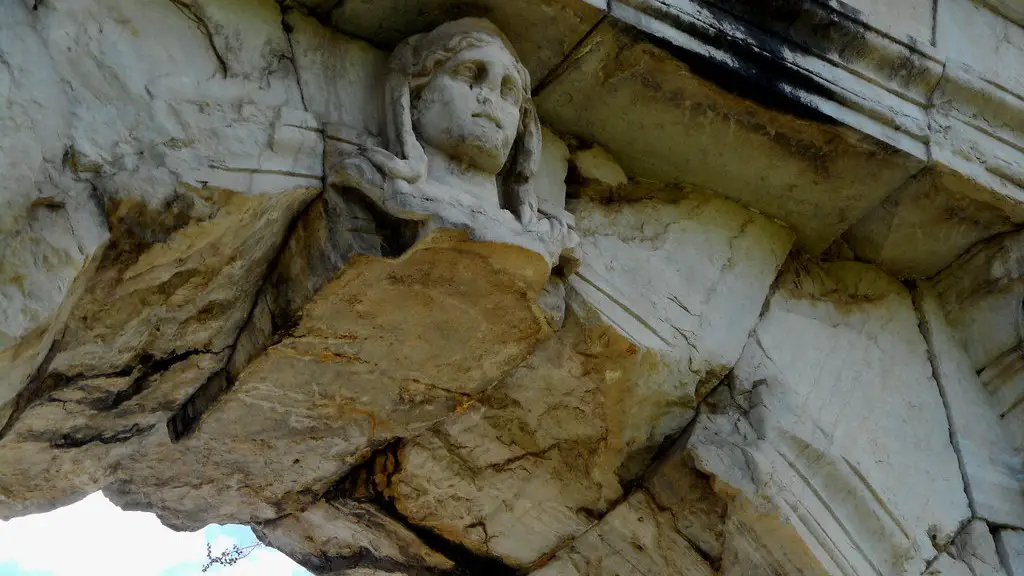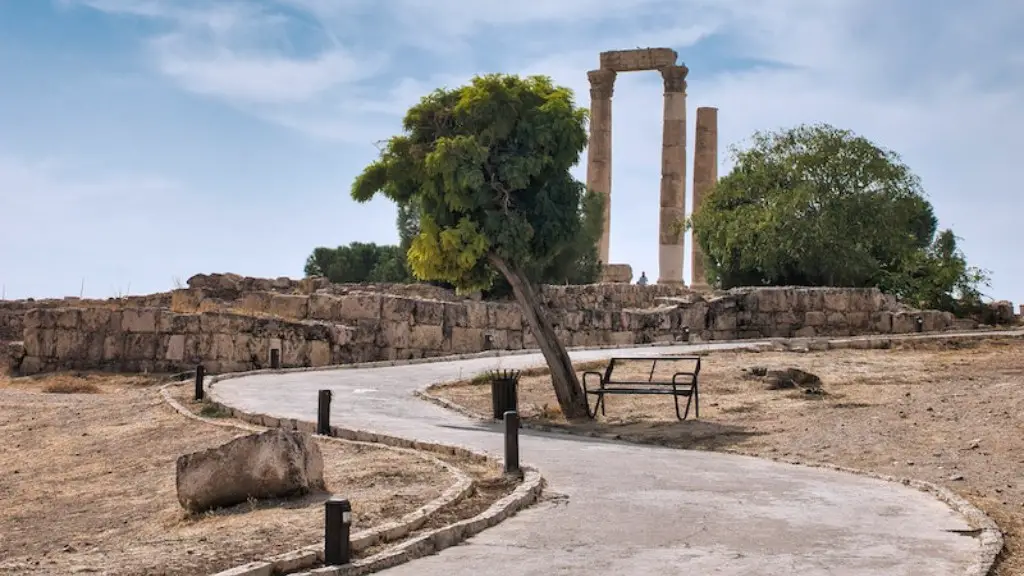From its inception in 753 BC, Rome evolved from a monarchy to a republican empire, surpassing its rival civilizations in military power and its capacity for innovation. During its long reign, Rome was known for its thriving economy and the coins minted within it. The coins were the lifeblood of the Roman economy, providing the resources to fund military campaigns, build monuments and cities, and spread its culture across Europe. So where exactly did the ancient Romans store their coins?
The ancient Romans were prolific mint makers and stored their coins in official mints. These mints were located in Rome and other cities in the Roman Empire and were primarily responsible for the production of coins. Mints operated workshops to produce the coins, smelting metal, shaping coins with dies, and using stamping presses to imprint their designs. The coins were stored in well-guarded facilities before they were distributed to markets and other trading centers.
The coins that were not stored in mints were kept in private warehouses and storehouses. These warehouses, typically made of stone and secured with iron bars, were located mostly in Rome and other major cities of the empire. People stored their coins in these warehouses to protect them from burglars and other thieves. It was also common for wealthy Romans to keep their coins in homes and safe deposit boxes.
The Romans also buried their coins in the ground for safekeeping. This practice, known as hoarding, was considered an effective way to protect coins from loss and theft. People also buried their coins to hide them from the tax collector. The coins were usually hidden in jars or sealed containers and buried in secret locations.
The concept of banks was only introduced to the Roman Empire in the late 1st century BC. Banking establishments (argentariae) provided vaulted storage to their customers and issued banking certificates and letters of credit. These banking establishments were the precursors to modern banks, and some of their services are still offered by banks today.
As the Roman economy declined in the 5th century AD, many of the private mints and warehouses fell into disrepair. Some of the coins were buried or locked away in vaults, and a few were lost or destroyed by the ravages of time. However, many of the coins survived and can still be found today in museums and private collections.
In conclusion, the ancient Romans stored their coins in a variety of places, including mints, private warehouses, homes, safe boxes, banks, and buried in the ground. These coins are a testament to the complexity and resilience of the Roman Empire and its economy.
Modern Replicas of Ancient Rome’s Coins
Today, modern replicas of ancient Roman coins can be found in the form of collectibles and souvenirs. Coins with imprints of famous Roman rulers, such as Julius Caesar and Octavian, are particularly popular. Such coins often feature images of the emperor and provide an interesting insight into the rulers of the age. Additionally, replica coins can be used for teaching and educational purposes.
These replicas are not always made from the same metals as the original Roman coins. Brass, copper, and nickel are used to create replicas of coins from the republic era, while silver or gold replicas are used for coins from the imperial era. As with the original coins, each replica is stamped with the design of the ruler and the name of the mint where it was made.
Modern replicas of coins offer a unique way to connect with the past by bringing history alive in an interesting and tangible way. Such replicas can be purchased from many online stores and are relatively affordable. In addition to being collectible items, they can also be used to teach children about the history of the Roman Empire.
Collectors of ancient coins often invest in modern replicas to supplement their collection. Replicas provide an opportunity to learn more about the coins and the rulers who issued them. They also provide an opportunity for collectors to add to their collection without having to deal with the high cost and other risks associated with collecting genuine ancient coins.
In summary, modern replicas of ancient Roman coins are a great way to explore history, appreciate the craftsmanship of ancient mints, and add to your collection. Whether you are a collector or a history enthusiast, these replicas offer a unique way to connect with the past.
Roman Coins in History and Pop Culture
Roman coins have been the subject of much fascination throughout history. As the foundation of the Roman economy, coins were used to influence political decisions and financial transactions. Coins have also played a role in literature, art, and popular culture. Today, they represent a unique window into the past and provide a vivid illustration of the history and culture of the Roman Empire.
The most iconic Roman coins are those issued by Julius Caesar. These coins feature his portrait and are among the most highly sought after by collectors. Other famous coins include those issued by Emperor Nero and Constantine the Great. These coins have become iconic symbols of the Roman Empire and can be found in many museums and private collections around the world.
Roman coins have also featured prominently in popular culture. In the classic 1958 film Ben Hur, Judah Ben-Hur gives coins to a Roman soldier instead of wine. This scene is seen as a nod to the power of money and the role it played in historical events like the Roman Empire.
Roman coins have been referenced in books and plays, too. In William Shakespeare’s Julius Caesar, the titular character appeals to the citizens of Rome with a bag of coins. This is seen as a metaphor for the Roman Empire’s ability to influence history through its vast wealth.
Over the centuries, Roman coins have become symbols of power and wealth throughout the world. The coins are a reminder of an empire that once spanned much of Europe and the Middle East, and their imprints are a vivid illustration of the political and cultural history of the age.
In conclusion, Roman coins have played a significant role in history and pop culture. They represent an important window into the past and provide an interesting insight into the culture and economy of the Roman Empire.
Authenticating Ancient Roman Coins
The ancient Romans hoarded their coins for centuries, and many of these coins have been unearthed by archaeologists and coin collectors. These coins are authentic and provide collectors with a unique insight into the past. But how to know if a coin is genuine or a counterfeit?
One way to authenticate a coin is to use a professional coin grading service. Professional coin grading services employ experts who can assess the condition, quality, and authenticity of a coin. These services provide a certificate of authenticity and grade the coins on a scale from 1 to 70. This rating helps to determine the value of the coin and whether it is genuine or not.
It is also important to research the coin’s provenance. Coins with a long history of provenance, such as those passed down through generations, are more likely to be genuine. It is also important to get coins from reputable sources, as counterfeits are often found on the market.
Experts can also use X-rays to inspect the coins. This reveals any discrepancies in the metal content of the coins, which can help to identify genuine coins. Additionally, the more detailed examination of the design, inscription, and the patina can help to establish the authenticity of a coin.
Genuine coins can have a great deal of value, both financially and historically, so it is important to be sure that they are authentic. Professional coin grading services, research of provenance, and X-ray examination are all methods used to authenticate ancient coins and help ensure that collectors get the most out of their purchases.
Investing in Ancient Roman Coins
Collecting and investing in ancient Roman coins can be both a fascinating and a lucrative endeavor. Coins from the Roman Empire provide an interesting window into history, and those that are well-preserved can be valuable investments.
Investing in ancient coins is a relatively low risk and relatively affordable way to diversify one’s portfolio. Ancient coins can appreciate in value over time and provide a diversified source of income. Furthermore, coins from antiquity may be exempt from capital gains taxes, making them even more attractive investments.
It is important to do research before investing in coins. Coins with a long and documented history can be more valuable, so collectors should try to stay informed of their coin’s provenance. It is also important to look for coins that are in good condition and to get coins from reputable sources.
It is also important to have realistic expectations when investing in coins. The market for ancient coins can be volatile, and prices can fluctuate depending on the demand. Additionally, coins can take a long time to appreciate in value, so it is important to be patient and to only invest in coins if you can afford to wait for a return on your investment.
In conclusion, investing in coins from antiquity can be a profitable venture and a great way to diversify one’s portfolio. It is important to do research and to only invest in coins from reputable sources. With patience and a little luck, investing in coins can be a worthwhile endeavor.





